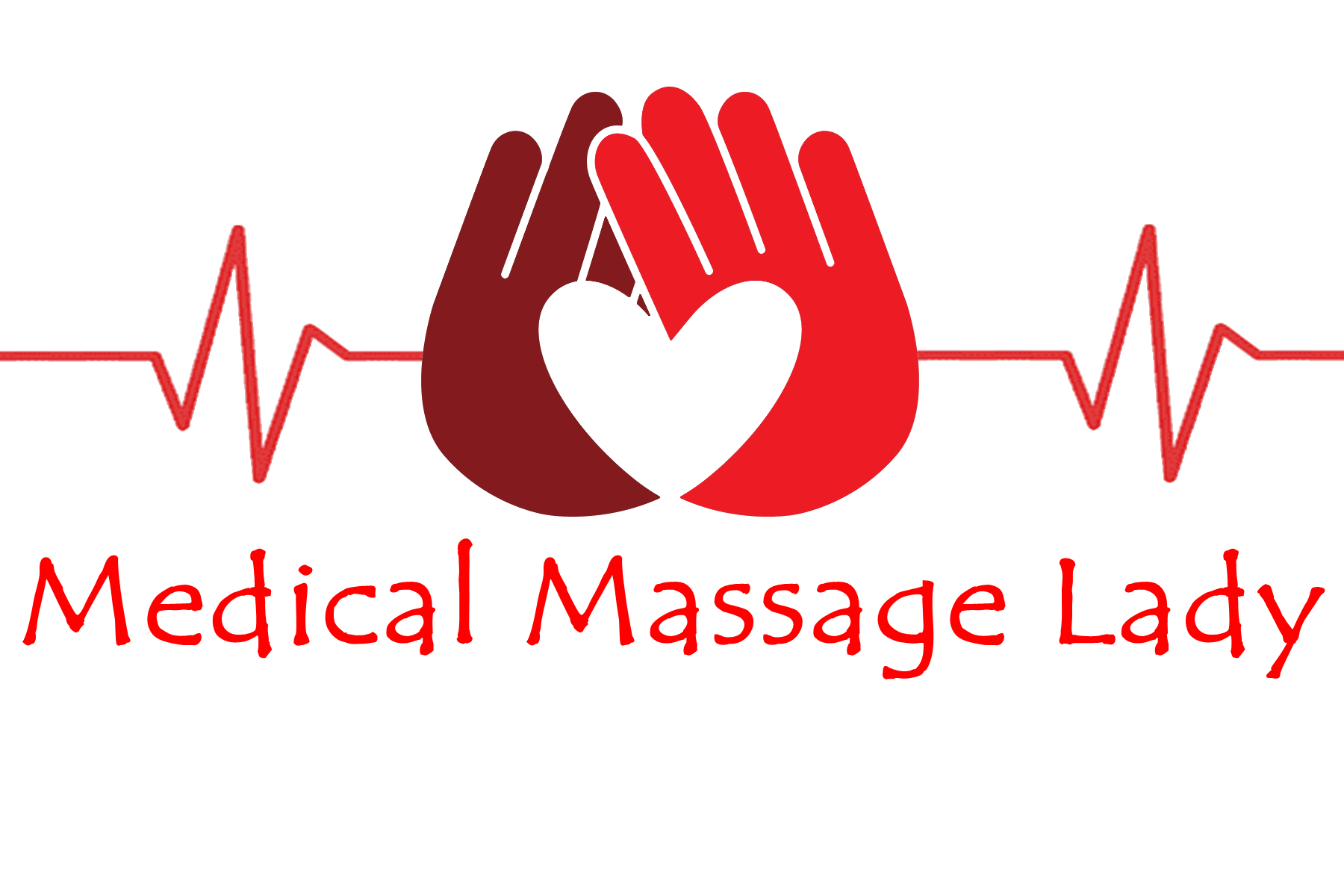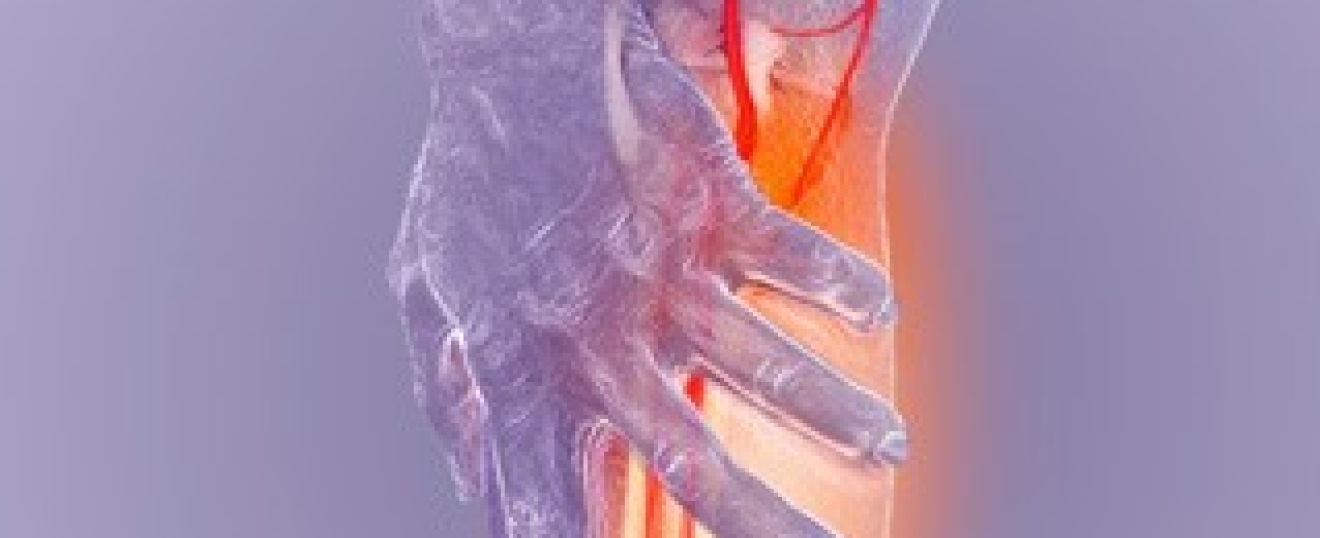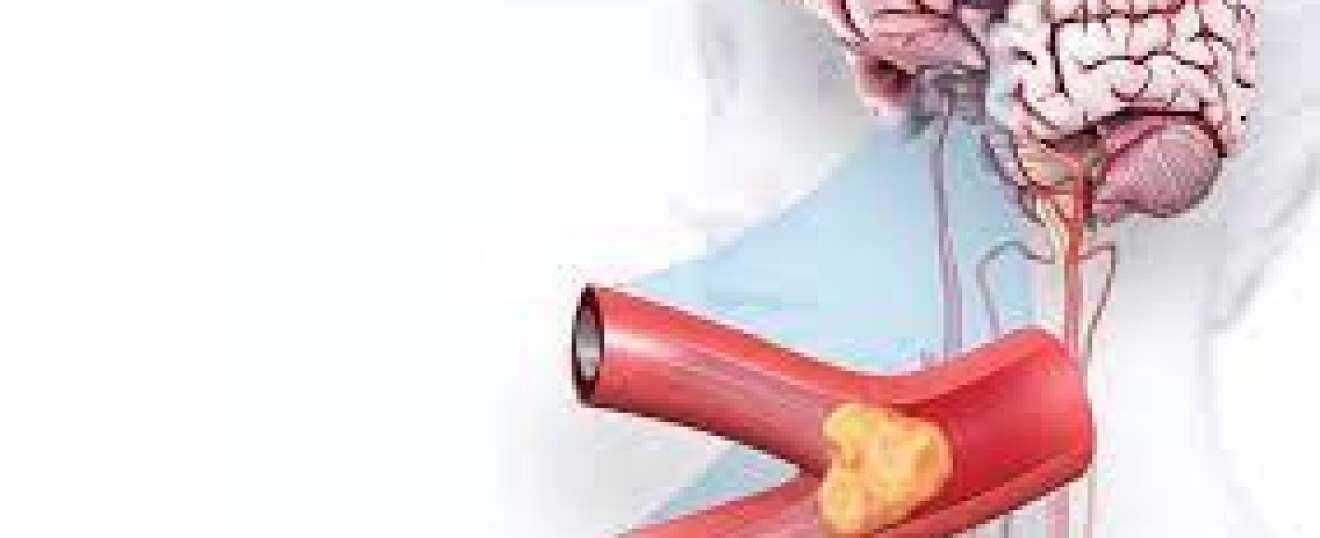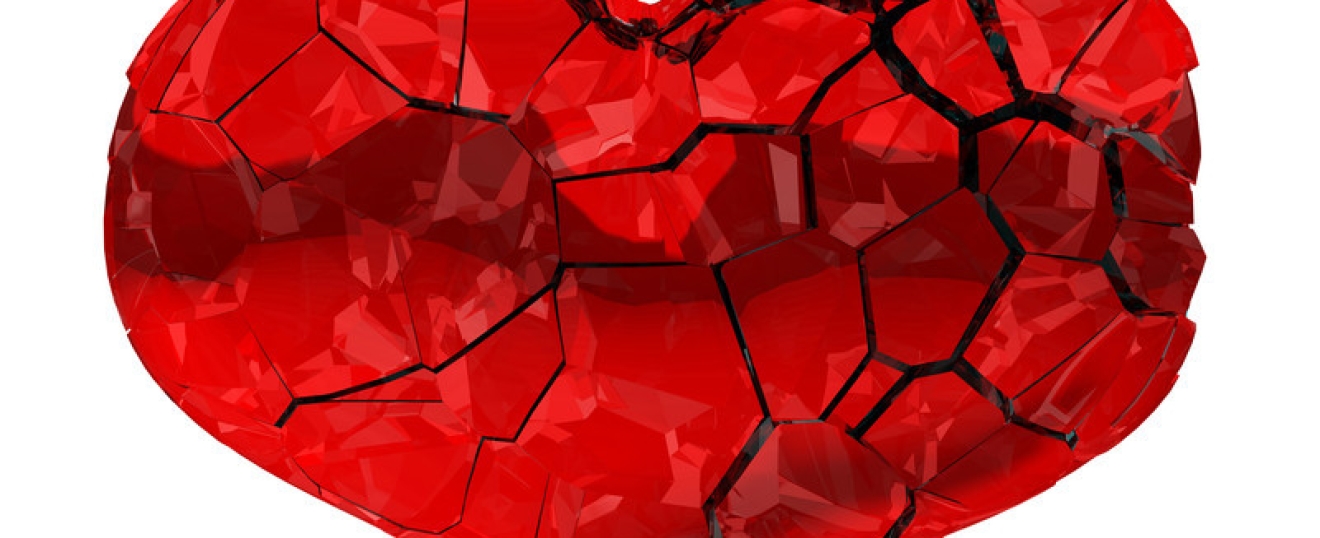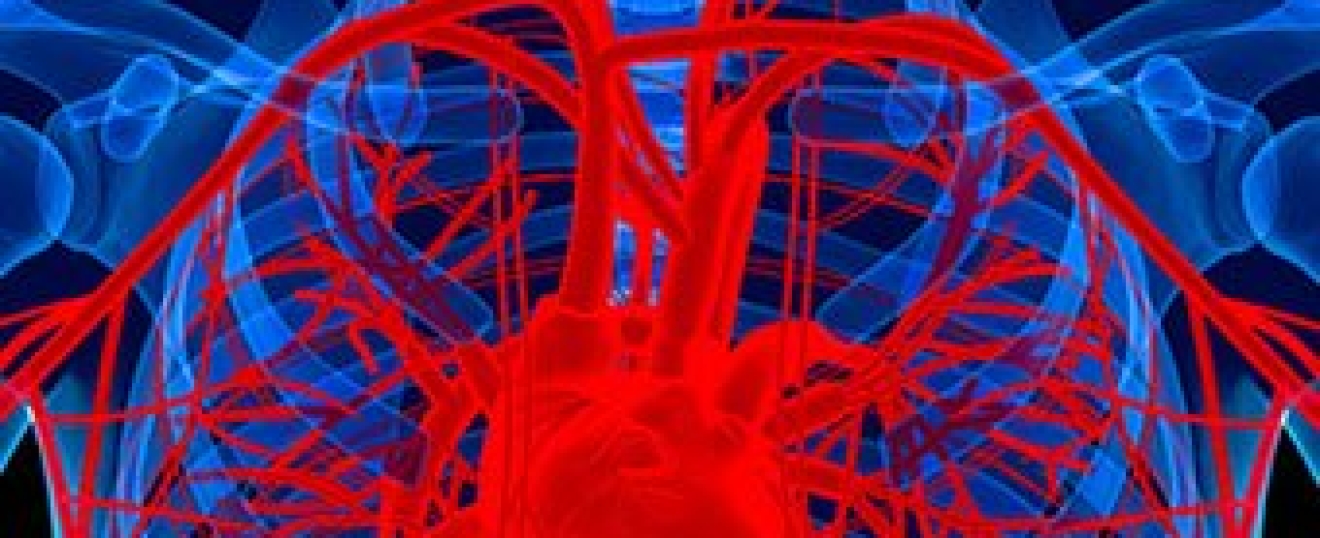- 07736 104738
- sam@medicalmassagelady.com
- Mon - Sat, 8:00 - 18:30
1 in 5 people over the age of 60 in the UK are thought to have PAD, causing plaque to block the coronary arteries, and leg pain due to reduced blood circulation to the limbs. People don’t tend to ignore chest pain, but leg pain is often perceived as less important, yet it can be equally as dangerous. Accumulated calcium and cholesterol forms plaque which not only blocks the arteries in the heart, but also in the legs. These blockages can also spread to the carotid and renal arteries, and people with PAD are 6-7 times more likely to suffer a heart attack or stroke.
Early treatment and lifestyle modifications are essential in minimising the risks of reduced blood flow to the heart and brain. If untreated PAD can lead to blood clots and limb ischaemia. The problem is, PAD is asymptomatic so many people remain undiagnosed. While massage may relieve pain and discomfort of PAD, by restoring the circulation, only a therapist experienced in this area should treat, and only with doctors consent, due to the increased risk of deep vein thrombosis.
RISK FACTORS
• Smoking
• aged 50+
• diabetes
• overweight
• high blood pressure
• high cholesterol/high triglycerides Smokers and diabetics have increased risk of tissue death in the legs due to reduced circulation. If you have high cholesterol or are diabetic, ensure that you are compliant with medication eg.statins to help prevent blockages and symptoms of PAD.
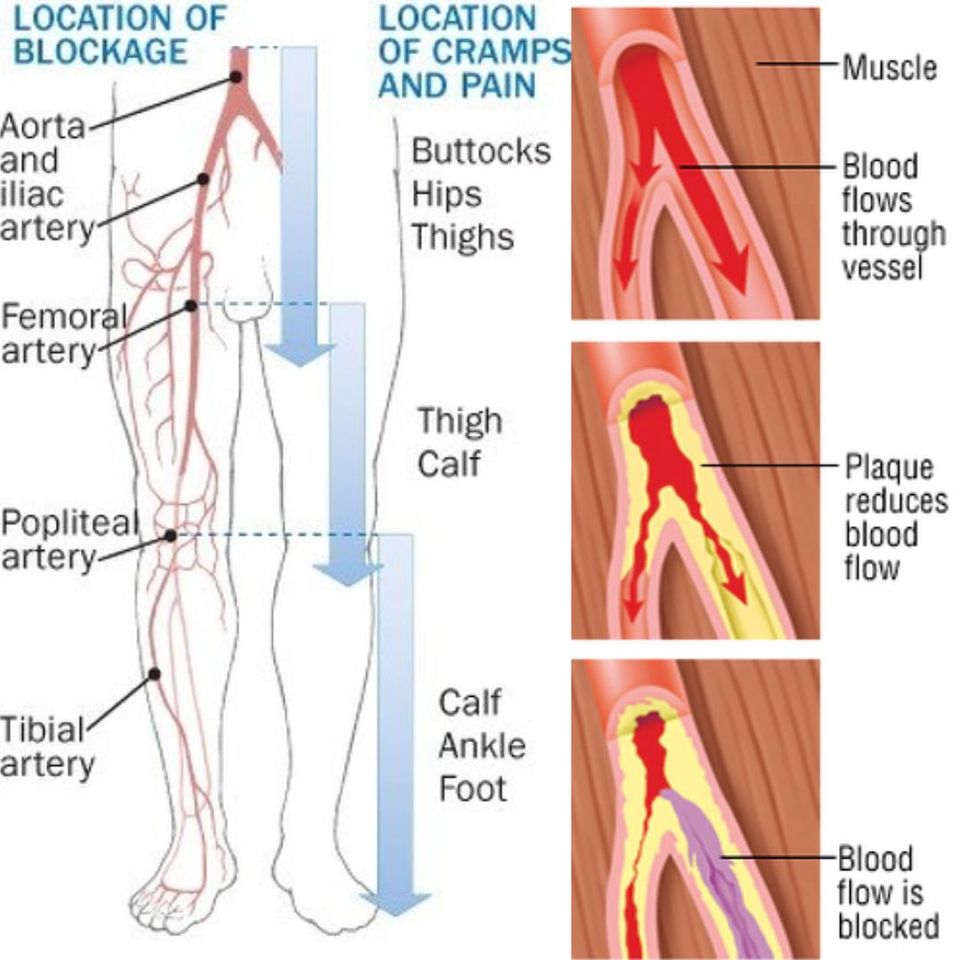
SIGNS & SYMPTOMS
• around 50 % of people with PAD have mild/no symptoms
• INTERMITTENT CLAUDICATION - limb muscle pain/cramping that worsens with activity but disappears with rest, particularly in the calf. Claudication may be mild or debilitating, to the point of preventing physical activity. This is an indicator of narrowed arteries causing reduced blood flow to the legs.
• INABILITY TO WALK as far/as fast as normal due to tired, achy legs
• LEG NUMBNESS/WEAKNESS
• COLD LEGS/FEET
• NON-HEALING SORES ON TOES/FEET/LEGS
• A CHANGE IN LEG COLOUR • HAIR LOSS on feet & legs
• CHANGES IN NAILS
• ISCHAEMIC REST PAIN - if PAD progresses, pain may become an issue while resting and this can cause difficulty sleeping. Hanging the legs over the edge of the bed or walking around may offer some relief.
TREATMENT
If preventive lifestyle changes and medication don’t improve PAD symptoms, you may need to see a vascular surgeon for an angioplasty, possibly with a stent.
PREVENTION/LIFESTYLE CHANGES
Walking and exercise are essential in easing PAD symptoms and pain, by improving circulation. The accumulated plaque in the arteries, restricts blood flow to your arms, legs, head, and organs.
• WALK & REST - listen to your body and stop if in pain, then start again when pain subsides. again. Progress slowly and stretch before and after a walk.
• DO THE RIGHT EXERCISES – at least 30 minutes of exercise several times a week is recommended. Swimming, cycling and yoga are good low impact exercises. Exercise will reduce PAD symptoms, and help lower your blood pressure and cholesterol levels. Exercise also conditions muscles to use oxygen more efficiently.
• FOOT CARE – Pain and numbness in the legs is common in PAD due to restricted blood flow, which will be more apparent during exercise when the muscles rely on good circulation. If circulation is poor, there is a higher risk of infection, which could cause further problems and make it difficult to stick to an exercise plan. - wear comfortable, well fitting shoes - check your feet daily for sores, cracks, bunions, corns, or calluses and see a podiatrist if necessary - wash your feet daily in warm water, don’t soak too long or the skin may dry out and dry thoroughly. - wiggle your toes regularly to keep the blood flowing - treat fungal foot infections quickly - avoid walking barefoot
• KEEP WARM – when you’re cold your blood vessels constrict to maintain body heat
• QUIT SMOKING - smoking constricts and damages blood vessels, making it harder for your arteries to carry blood
• AVOID SOME COLD MEDICATIONS –pseudoephedrine, which is found in some medications, constricts the blood vessels, thus worsening symptoms
• EAT WELL – increase fruits, vegetables and whole grains. Reduce salt, sugar, alcohol, and saturated fats. The Mediterranean diet can lower reduce blood pressure and cholesterol levels. Also foods rich in omega-3 fatty acids can improve blood vessel health.
MASSAGE THERAPY FOR PAD
Massage is one way to relieve pain due to PAD, as it stimulates the circulatory system, but it must be done using specific techniques and with doctors consent healthcare. If done by someone who is not experienced or adequately qualified, the consequences can be fatal, eg.releasing a blood clot. When used alongside the lifestyle modifications and medication, massage can minimize the progression of PAD.
• DOCTORS CONSENT – this is particularly important if the client also has risk factors for deep vein thrombosis.
• DURATION – frequent, short massage sessions (2 minutes per leg) have been shown to be more effective than longer sessions.
• BUTTERFLY TAPOTEMENT – a gentle technique to loosen muscles that have hardened due to blockages , using rhythmic tapping similar to butterfly movements, along calf from ankle to to behind the knee, to manipulate the soft tissue of the body to improve blood flow and relieve muscle spasm and pain.
• FLUFFING - this technique combines effleurage and petrissage, applying gentle effleurage strokes towards the heart but with a short squeeze every inch or so. This can be done after butterfly tapotement, with the client in a prone position. Fluffing must be done on a muscle in a relaxed position to benefit from improved circulation and should not be used on clients with ischemic rest pain. Fluffing is beneficial as it doesn’t tear or bruise the calf muscles.
EXERCISES FOR PAD
Exercise is the first line of treatment for PAD, with weight-bearing exercise improving symptoms, revascularizing patients with claudication, and relieving cardiovascular stress.
• WALKING – at least 3 times a week for 30 - 60 minutes. Including strength and balance exercise eg. gym, bowling, and weightlifting, is also beneficial
• STAIR STEPPING – low impact weight-bearing cardiovascular activity
• CALF RAISES – strengthening exercise for the calf muscles, improving blood flow
• CYCLING – research shows significantly improved quality of life and hip movements
• YOGA – improves mobility, reduces cramping by increasing oxygenation and blood flow to the muscles and helps to reduce formation of plaque in the arteries
